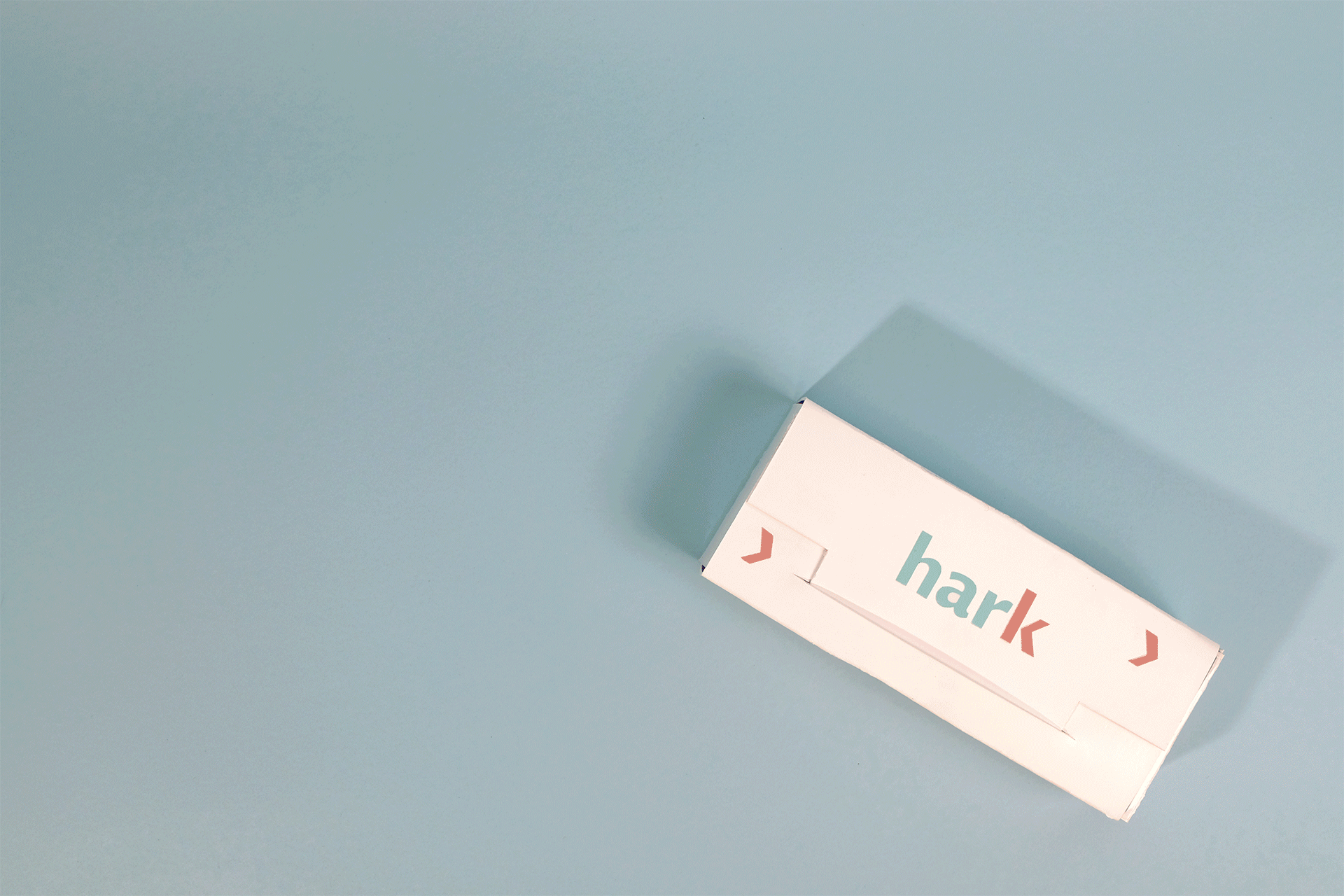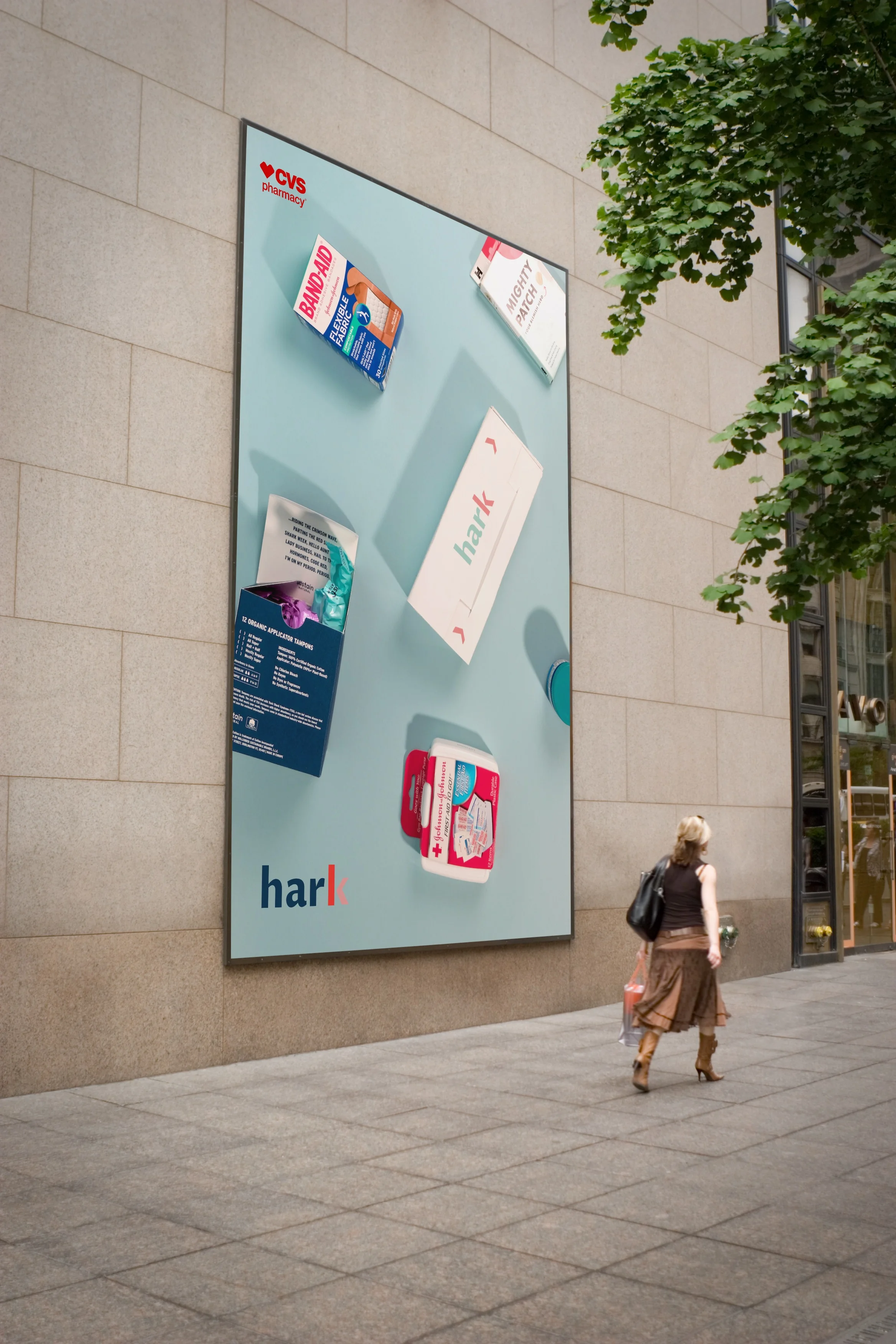HARK: An Over-the-Counter Rape Kit
Hark, a speculative project created by second year student Antya Waegemann, is proposed to be the first over-the-counter sexual assault forensic exam (or “rape kit”) available at any major pharmacy. Small and discreet, Hark is designed to be approachable and comforting for survivors of sexual assault. The kit includes the necessary evidence-collecting components such as swabs, nail scrapers, and DNA slides. But it also incorporates a data card, so that the survivor can record their story and photographs at their own pace and comfort. Hark puts the rape kit process in the hands of the survivor and takes away the stigma, judgment and long process of the current rape kit.
According to the Rape, Abuse, and Incest National Network (RAINN), a sexual assault happens every 98 seconds in the United States. While 1 in 5 women experience rape in their lifetime, 60% of survivors don't report it, and even when they do, less than 1% of rapists are convicted. The low numbers of reporting and convictions can be attributed to many different factors such as cultural bias, societal pressures, stigma, lack of training from police and nurses, and gender inequality.
A sexual assault happens every 98 seconds in the United States. But a whopping 60% of survivors don't report it.
“But what role do rape kits play in this process?” asks Antya. “Currently, there is no standard kit, no standard policy, and no standard procedure around conducting sexual assault forensic exams. Most kits are only available in the Emergency Room, and if a hospital does not provide them, they will often send the survivor to another hospital, which can lead to a unnecessary run-around for an already distressed survivor. Additionally, the rape kit process typically takes 3-6 hours to conduct and can feel quite traumatizing and invasive for the survivor.“
So how does Hark work?
First, the survivor would acquire the kit either from a pharmacy, through delivery via the Hark app, or a friend or trusted companion could pick it up.
The survivor then selects a "witness," someone who could help them conduct the exam but also sign and attest to collecting the evidence correctly and according to the directions; because the kit currently functions with the primary goal being collecting DNA evidence from the perpetrator, it is important to adhere to evidence collecting standards and ensure nothing is tampered with. The app not only allows for delivery, but also gives a step-by-step video tutorial of how the evidence should be collected, so as to make the experience as seamless and uncomplicated as possible.
The witness and survivor could conduct the exam in whatever location feels most comfortable and safe, and then both would sign the forms in the kit, attesting to collecting the evidence truthfully and following standards. The survivor then scans the kit's QR code, triggering the kit's tracking system; they could then either mail the kit to police, or bring it to their police officer representative in person.
Currently, the system around chain of custody is extremely important to law enforcement. If they choose to move forward with a case and prosecute a case as best they can, they need to be able to prove that the evidence was collected up to the required standards, and that it has not been jeopardized in any way, by anyone, after collection. While each procedure around chain of custody is different per state and jurisdiction, generally, only one nurse or physician conducts the exam, and "touches" the kit from when it is opened to when it is sealed; and they cannot leave the kit's presence at any moment during that time. After the kit is completed, if it is to be transferred to the police, and a case is opened, the nurse or physician who conducted the exam will need to personally pass it over to the police officer who responds to the report, and is called to the hospital (this could be Special Victims Unit in New York or it could be any police officer). The moment the kit is passed from one person/agent to another, the time and date needs to be documented, hand recorded on the kit, with each party's signature.
In the case of Hark, the chain of custody process would mimic the current one—but instead of a nurse practitioner signing off, the "witness" would sign and attest to proper chain of custody. If the kit is to be mailed to the precinct rather than hand delivered, the witness would scan the kit's code, and photograph the sealed kit. The app would prompt the witness to sign, while alerting the police the kit had left the witness's possession. Once the kit arrives at the police station through a designated Hark-partnered courier, the investigating police officer would scan the kit's code, take a photo of the sealed received kit, and be prompted to digitally sign as the next person in the chain of custody. “Then each party would sign one more time, attesting to confirming that the transfer of the kit was met successfully and within the proper guidelines. Without these photos, signatures and confirmations from both ends, the kit could not move forward in any case,” Antya said. “Why is this so important? Because like any criminal case, law enforcement, lawyers, prosecutors, and the survivor all want to ensure that evidence has not been tampered with and that standard policies have been followed to level all playing fields.”
As part of the design process for Hark, Antya held a co-creation session at A/D/O called "Redesigning the Kit". She asked participants to map out where they would go after a sexual assault and how they would imagine acquiring kits.
“Most participants responded that they would feel ashamed after the assault and would only feel comfortable going to a close friend or someone they trust, as many didn't trust the police, were afraid of emergency rooms, and couldn't turn to their families,” Antya said. “Creating a kit that survivors can not only access on their own, but then conduct with someone they trust could allow for a more survivor-centered experience, encouraging more women to feel safe reporting and eventually increase the low rates of reporting.”
“The current system around kits is not survivor-centered, is not trauma-approach-focused and discourages women from reporting sexual assaults.”
She added, “The current system around kits is not survivor-centered, is not trauma-approach-focused and discourages women from reporting sexual assaults, whether it's the long, tedious process in the emergency room, the many questions they have to answer to strangers, which often include judgement, but also reliving their trauma with a stranger through an evidence collecting process. Just in the way that many women want to buy a pregnancy test without the judgment of strangers, and conduct it in the privacy of their own homes, couldn't sexual assault kits also be just as accessible and privacy centered as well?” Hark restores agency to survivors, and could be a step towards changing the way incidents of sexual assault are reported and perceived by society.







